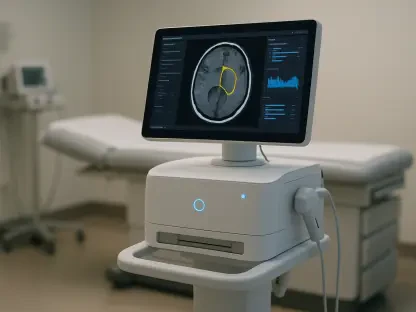Amid intense national debates over abortion rights, the Texas Senate recently advanced a set of legislative modifications aiming to refine the state’s rigid abortion laws. This latest effort underscores a broader trend of states attempting to clarify medical exceptions within stringent abortion bans, often devoid of allowances for rape or incest. The Texas bill’s approval, marked by unanimous bipartisan support, points to the urgency in addressing the ambiguities that have left healthcare providers uncertain and potentially vulnerable legally. The focus remains on offering clearer guidance in instances where medical emergencies necessitate urgent interventions. While the updates do not significantly expand the scope of exceptions, they are pivotal in defining conditions under which doctors can act during critical situations. This evolution in Texas law resonated with similar patterns, as seen recently in other states like Kentucky and South Dakota, where legislative adjustments aim to balance stringent restrictions with pragmatic medical needs.
Legislative Context and Medical Exceptions
Bipartisan Support for Clarification
In crafting the new provisions, Texas lawmakers sought to reduce the uncertainty faced by medical professionals under previous regulations that did not adequately define specific conditions warranting an abortion. The legislation now explicitly states that procedures may be performed if a life-threatening condition is imminent, even if not yet causing harm. This distinction is crucial as it enables doctors to act decisively, without fearing legal repercussions. This change represents the first modification since the law’s enactment following the landmark reversal of Roe v. Wade. For many in the medical community, it alleviates the burden of potentially violating legal standards while prioritizing patient care. Despite maintaining severe restrictions, with no exceptions for rape or incest, proponents argue the revision promotes responsive and life-saving decisions during critical medical emergencies. The move exemplifies a careful maneuvering within strict legislative frameworks to address acute medical concerns.
Ongoing Legal and Advocacy Challenges
The stringent nature of Texas’s abortion laws continues to provoke significant challenges, as the state grapples with an intricate web of legal proceedings and advocacy pushback. Criminal charges against practitioners and an influx of lawsuits from neighboring states highlight the contentious atmosphere surrounding abortion legislation. The adjustments, albeit focused on medical clarity, do not dispel the broader issues of restricted rights and the absence of comprehensive exceptions. Advocacy groups maintain a vigilant stance, emphasizing the need for holistic reform rather than piecemeal amendments. They argue that while medical exceptions are essential, the lack of broader allowances represents an oversight of complex societal needs. As debates endure, Texas finds itself at a crossroads where public sentiment and political pressure vie with the rigid enforcement of law. The interplay between legislation and public advocacy underscores the deep-seated discord on reproductive rights and how best to negotiate the current legislative landscape.
Wider Trends and Implications
Comparative Legislative Movements
Texas’s legislative actions reflect wider national trends where states face pressures to refine and clarify abortion laws amidst advocacy and legal challenges. Recent amendments in Kentucky and educational efforts in South Dakota signify a broader movement toward balancing severe restrictions with reasonable medical allowances. These changes indicate a pragmatic approach, where states aim to address ambiguities that place medical professionals in precarious positions. Such legislative adjustments are increasingly viewed as essential measures, striking a balance between maintaining stringent standards and acknowledging the necessity for urgent medical interventions. As more states explore similar modifications, the trend suggests a gradual shift toward ensuring legislative clarity without overtly weakening the restrictive frameworks they operate within. This evolving landscape is a testament to the complex interplay between legal rigidity and practical healthcare needs, highlighting the challenges of legislating sensitive and deeply personal issues.
Impacts on Healthcare and Society
The changes initiated by Texas have far-reaching implications not only within healthcare but also on societal perceptions of abortion rights. The revised law, with its emphasis on clarity, sends a signal to medical practitioners about their role in navigating life-threatening scenarios without the looming threat of legal penalties. However, the societal divide over abortion remains pronounced, with many viewing these amendments as insufficient in addressing the broader scope of rights and freedoms. Individuals and advocacy groups exhibit cautious optimism, acknowledging the move as a step forward in facilitating prompt medical responses. Yet, the overarching sentiment still demands comprehensive reform encompassing various socio-cultural dimensions. The ongoing discourse reflects the complexity inherent in aligning legislative actions with the nuanced realities experienced by individuals and healthcare providers. As public dialogue continues, it becomes evident that legislative modifications, though significant, are mere components of a larger pursuit for balanced and humane abortion policies.
Future Considerations for Texas Law
In the midst of heated national debates about abortion rights, the Texas Senate has moved forward with legislative changes to the state’s stringent abortion laws. This action is part of a larger statewide trend to clarify medical exceptions under strict abortion bans, which often lack provisions for incidents of rape or incest. The unanimous bipartisan support for the Texas bill highlights the urgent need to resolve ambiguities that have left healthcare providers unsure and legally vulnerable. The main focus is on providing clearer guidelines for instances where medical emergencies require immediate interventions. Although these revisions don’t significantly broaden the range of exceptions, they are crucial in outlining scenarios where doctors can take necessary action during critical situations. This shift in Texas law echoes similar recent patterns in states like Kentucky and South Dakota, where legislative adjustments strive to balance tough restrictions with practical medical considerations.









